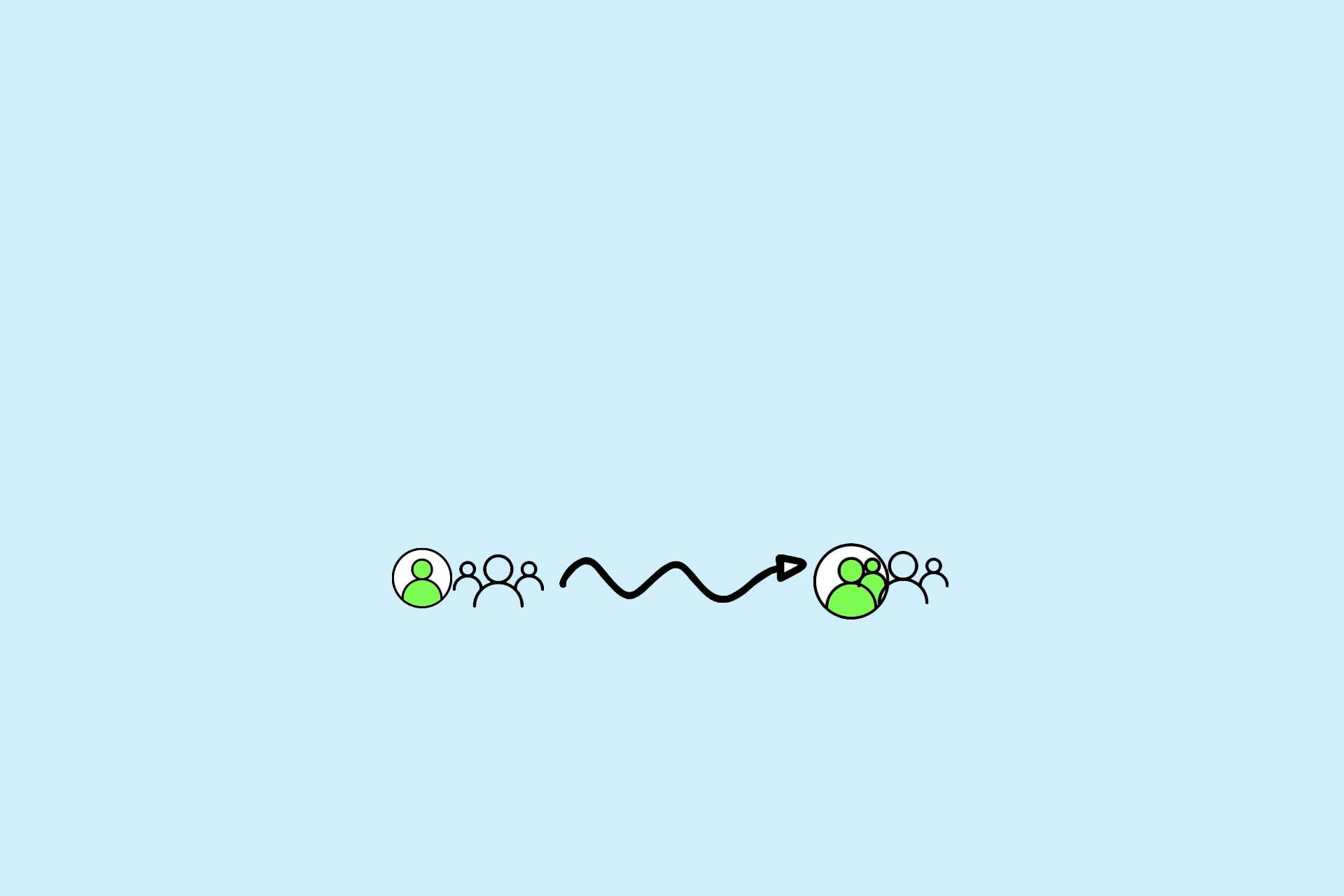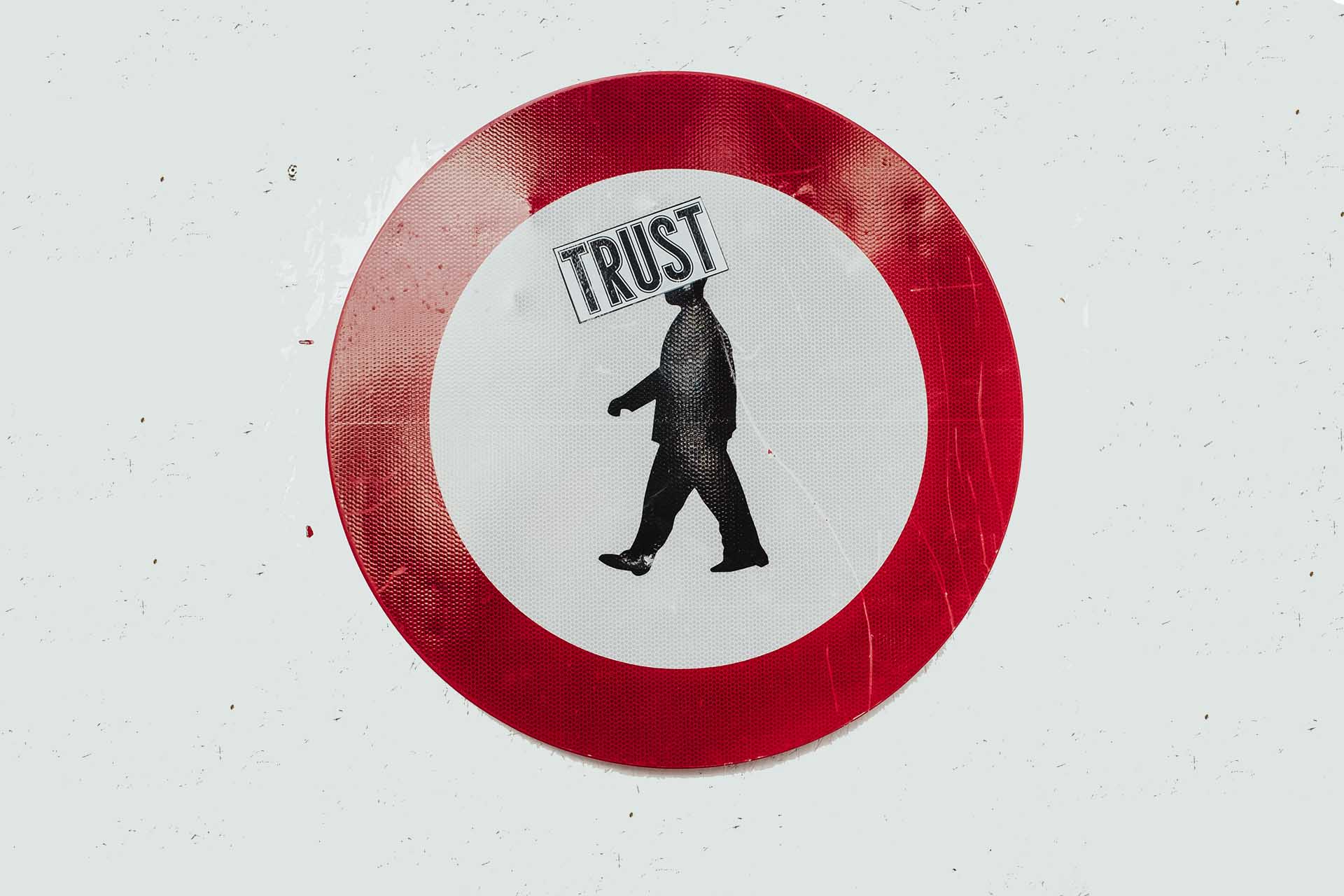Languishing and Dahinsumpern
How to steer your team out of the doldrums with digital facilitation
I feel like a little sailboat in the water. Doldrums. A state without wind and waves. At the beginning I think it’s nice. I have time to think about things or to do things I’ve been putting off for a long time. But at some point the steam is gone. I don’t get anywhere. Nothing happens on the horizon. Everything feels agonisingly slow and leaden by now.
I recently read an article on Languishing1. Until then, I was not familiar with the word, but I was familiar with the feeling that the article primarily deals with. I am sure many people know it.
Languishing and flourishing
Languishing describes a state of mind that is in a grey zone between burnout and depression. Put simply: you feel okay, but not good. Life seems dull and as if through a veil of fog. You feel like you are in a state of stagnation, without motivation and without anything to look forward to in the future. Although actually “everything is fine”, there is a lack of well-being. However, there are no actual symptoms of a pronounced mental illness.
The phenomenon of languishing at first seems like a trend, a new word that emerges from a current situation. In fact, it was already described in 2002 by the sociologist and psychologist Corey Keyes2. Keyes is known for his work in Positive Psychology and describes Languishing as the opposite of flourishing3. Both are central concepts in Positive Psychology. Flourishing translates as thriving. We feel it when we are in a state of increased well-being, a fulfilled social life and personal growth.
The word languishing means the exact opposite: life feels hollow and empty. There is simply no wind blowing through the sails. We bob along aimlessly and joylessly in our boat.
Dahinsumperning teams
In my home country, Austria, we call this “Dahinsumpern”. Sumpern means to work slowly. We are moving, but we don’t feel that we are making any progress.
This feeling is currently tangible and understandable for many people. Due to the sometimes abrupt change to work in a home office, employees suddenly feel left to their own devices. During meetings, there are often expressionless faces on the screens, if there are any at all. Many aspects of body language are almost completely absent anyway. We can hardly perceive the mood of the other person. Interpersonal encounters or joint breaks happen less frequently. This can increase the dullness even more.
For this very reason, it is important in terms of self-care to pay attention to one’s own health as well as the health of one’s team members and to keep an eye on physical and mental well-being. As you can imagine, employees who are “dahinsumpern” have little intrinsic motivation to be highly effective at work and to move the company forward. This is where skilful digital facilitation comes in and brings a breath of fresh air.
A breath of fresh air for team development
Now perhaps more than ever, it is precisely one of the tasks of team leads to bring a breath of fresh air into team development. Their task is to pick up all employees where they are or where they are stuck. Because it is also digitally possible to bring your team out of the state of languishing, back into effectiveness.
In the following, I will outline how you can use digital facilitation for yourself and your team, which methods are suitable as a start and how you can take control of processes together as a team in the long term thanks to digital facilitation. So use the fresh wind to pick up speed again.
What does it take to move teams from languishing to doing?
First, it is important to find out where your team stands emotionally and how the staff really feel. A quick ” How are you?” at the beginning of a virtual meeting is not enough if you want the team to grow healthily, thrive and work effectively again.
However, before I show you step by step how to get out of the state of languishing, I would like to go into what exactly I understand by the term “digital facilitation” and take a look at its history. To do this, it is first important to take a closer look at the concept of hosting.
Good hosts give a good feeling
Hosting means something like “giving hospitality”. Ask yourself: What does a good host need to make you feel comfortable? This includes a feeling that is conveyed to you. You feel good when you are seen, when your opinion is heard and respected in conversations, when a valuable and appreciative exchange takes place and you are provided with everything you need at that moment. Right?
It is very similar in the work environment. Depending on the meeting and the goal, different settings and methods are needed, which are kept in mind and guided by the “host” in an empathetic, humorous and structuring way.
Shifting facilitation into the digital space
We know enough of the methods used in the setting of conferences and meetings from the past, but things are different in the digital space.
The current challenge for many companies is to transfer a good feeling to the digital space, keeping the big picture in mind and each individual at the same time. Hosting and facilitating in the virtual space brings new challenges but also new opportunities. This is where the term “digital facilitation” comes into play.
Digital facilitation literally means digital moderation. It sounds simple, but it has far-reaching implications for the setting and well-being of employees and the digital transformation of your organisation.
In contrast to moderation and hosting, digital facilitation means being a host in digital spaces and using appropriate tools. These include, for example, Microsoft Teams, Jira, Miro and many more, which I have been working with for years.
Away from post-its and flipcharts, towards tablets and software designs that allow digital collaboration to succeed in real time. Through digital facilitation, it is possible to give your team a proper digital transformation boost.
But interpersonal skills and empathy are also essential for a healthy digital transformation, which is why the focus should be on a healthy team and everyone’s well-being, in addition to entrepreneurial activities and the shift to agile ways of working. Because only happy and healthy employees can work highly effectively, are ready to collaborate digitally and embrace change together.
If your employees are bogged down in Languishing, it is very important to recognise this and also to name it in order to be able to steer the bobbing boat – i.e. your company – out of the doldrums together.
Getting things done together – also digitally
But how can good “we-feeling” cooperation succeed when the team is spread out? It is also possible digitally to awaken the team spirit, to convey appreciation and support to the employees and to put wind back into the sails of each individual. The best thing about it is that you don’t have to manage it alone, but can get someone on board who will accompany you and your team in a targeted way with the help of digital facilitation.
With the right support, this is exactly what leads a team back to a sense of unity and takes it to the next level. This requires empathetic guidance with lightness and humour.
Targeted agile working methods, new work hacks and targeted digital facilitation make it possible to create a space for precisely this, while keeping an eye on the needs of everyone involved. Because the goal is not employees who just “function” 24/7. The goal is to develop behaviours that help your employees grow and be intrinsically motivated instead of stuck in languishing.
How to lead your team out of the swamp of languishing with digital facilitation
In the following, I address four building blocks that digitally promote healthy team development and release the anchor.
1. Acknowledge and name languishing
No human being is always strong, motivated and powerful. Due to the current challenges, it is more important than ever to be allowed to show this side of oneself as well. There is often an assumption in teams that personal sensitivities have no place in the workplace. In order for teams to meet at eye level and support each other, it is necessary to set a good example as a team leader.
Applying the concept of Languishing can be helpful for many people. Knowing that a state of mind has a name also conveys: I am not alone in this. Sharing one’s own experiences creates additional connection and humanity.
A protected setting:
With the help of accompanied digital facilitation, create a protected setting in which employees can feel safe and heard. After all, you are not facing this problem alone either and can bring support on board.
2. Create an environment where people give their best
Together, we can create moderated digital spaces that promote social interaction and where – in a protected setting – sensitivities can be exchanged. This includes methods such as
- digital coffee dates,
- meetings in the virtual kitchenette or
- regular check-ins in which the right questions are asked, and
- improvisation exercises to get back into the feeling.
Asking for personal energy levels is also an insightful method in which employees can reflect on themselves and subsequently formulate goals and ideas.
In addition, goals that have been achieved – no matter how small – can be celebrated. This increases motivation for the next tasks and reduces the feeling of stagnation. Your digital facilitation coach also keeps an eye on the small successes.
3. Use the diversity of digital facilitation
The goal of digital facilitation is to guide teams into a healthy form of digital collaboration. Away from flipcharts and post-its to real-time digital processes.
In order for your team to grow healthily into this new form of collaboration, you need to know where your employees are at the moment.
The possibilities of digital facilitation that you can use in everyday life to transfer processes into the digital space are as diverse as your team. For example, documentation can be started while workshops and meetings are being held. This eliminates the need for elaborate minutes and lists of results. I prefer to do Sketch Notes, because digital work can and should be fun. It should be easy and doesn’t have to languish in rigid meetings. With a clear setting and someone to guide the process, meetings become varied, encourage social interaction and enable focused collaboration.
4 Get your team in the flow together
As mentioned above, the word flourishing describes the opposite of languishing. You could also say the team needs to get back into flow. Flow describes a state in which you forget the world around you. When you are absorbed in what you are doing and become one with the process. The more often we find ourselves in such flow states, the more fulfilled and satisfied we feel. This is the result of studies by the happiness researcher Mihaly Csikszentmihalyi4. According to him, the prerequisites for flow are:
- The task corresponds to one’s own abilities.
- It is challenging.
- You work in a concentrated way and block out everything else.
- There are clear goals with intermediate steps.
- Actions are followed by direct feedback.
By getting employees on board with their personal development and that of the company with the help of digital facilitation, flow states can arise that counteract languishing. Bring your employees into their personal growth and take their feelings and sensitivities seriously.
Digital facilitation: a silver lining on the horizon
Digital transformation affects all employees in your company. By facilitating this process and transferring proven methods of facilitation to the digital space, you can free your team from the doldrums of languishing. For it is precisely this state that team leads should and must actively counteract in order to bring the team out of the doldrums and back into effectiveness. The current challenges and the abrupt change in working practices should not be underestimated, even a year later. To ensure that your company can continue to successfully drive digital transformation, it is important to fill your sails with fresh wind now.
And a breath of fresh air can come from proven and guided digital facilitation. By bringing help on board for you and your team, someone is at your side to moderate the way out of the crisis and bring healthy team development to the fore in order to draw out the intrinsic motivation of the employees again.
Because, and I can’t say it often enough, only when all employees are doing well can teams collaborate healthily and stay motivated to work together towards goals.
Thanks to digital facilitation, it is possible to experience cohesion and growth even in virtual space, to give new motivation to escape languishing and to recognise the silver lining again.
It is important not to lose sight of the goal, but at the same time to give all employees the chance to grow into new situations personally, and thus to emerge from the crisis stronger as a team.
Let’s get into action together and lead your team out of the doldrums with effective and unconventional means.
Notes:
Do you want to learn sustainably with your organisation and at the same time enable teams to deliver quickly? Then please contact Nadja Obenaus.
[1] https://www.derstandard.de/story/2000126264972/languishing-dahinsumpern-im-blues-der-pandemie
[2] Corey Keyes
[3] Flourishing
[4] Mihaly Csikszentmihalyi
Nadja Obenaus has published three more posts on the t2informatik Blog:

Nadja Obenaus
Nadja Obenaus has been working for more than 15 years as an IT consultant and d-coach with international teams. As a certified LeSS user and pleasure trainer, she follows the motto “Less is more” in her specially developed de-coaching approach. Her topics are healthy growth, self-organised teams and organisational resilience.
Born in Styria, she is a passionate triathlete and when she is not involved with the children at Weekendschool Germany, she prefers to cycle through her adopted home of Hamburg.


